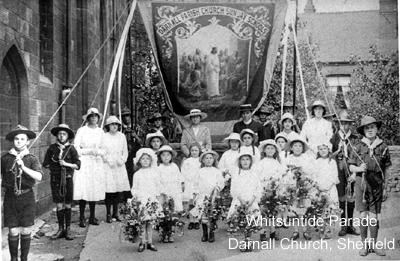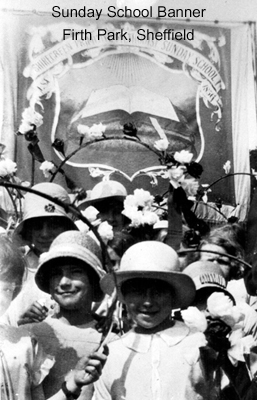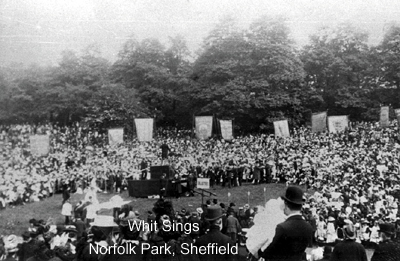A.D. Cherrington | 22-Jan-2020
The Story Behind ‘Sail On By’
During World War 2, on a fine clear day in October 1942, the Queen Mary sliced through her escort ship, HMS Curacoa, with the loss of 338 lives. No enemy U-boats or aircraft were evident, and the 11000 men aboard the Queen Mary scarcely felt a bump. Tragically, due to risk of enemy attack, she could not stop to pick up any survivors. Pam’s father, Able Seaman Ernest Ward, served on the Curacoa and was one of the 101 men who survived. “It was like seeing a block of flats coming straight towards us” he told us. Due to the effect this incident might have on morale it was kept secret for many years. This song is dedicated to the memory of HMS Curacoa and all those who served on her.




The Story Behind ‘Errand Lasses and Buffer Girls’
In the Sheffield cutlery industry in the early 20th century the Buffers were renowned as feisty women with a cheery disposition and colourful language. They worked in women only shops and it was their job to buff up the fine silver at the end of the process. They worked hard and played hard and were very proud of their job because it was quite skilled. Some of them earned more than some of the men. They were what you might call the ladettes of their day. Pam’s auntie Ivy was a buffer girl. They would turn up in pristine white calico overalls or brats as they were called on a Monday morning but by the end of the week they looked as though they’d been down the pit because it was a very filthy job. The buffing muck they used for polishing was a mixture of heavy sand and oil. In the buffing shop there were also errand lasses. These were the girls under sixteen not able to go on the buffing wheels and they were the apprentices. One of their jobs was to cut out aprons and leggings from brown paper. The buffers would tie these brown paper leggings around their legs with pieces of string against the buffing muck. Pam remembers once walking on the Moor (the main shopping centre in Sheffield) with her mum and they saw a gang of buffers at lunchtime coming towards them, arm in arm across the pavement singing at the top of their voices

The Story Behind ‘Little Mesters’
In Sheffield the Little Mesters were artisans that fashioned the finest blades, hunting knives, pocket knives and so on. They did the whole process from start to finish from the steel coming out of the furnace to the finished item complete with beautiful mother of pearl, Indian horn and fancy handles. All this was done all with their hands and just the most basic of tools. It was a seven year apprenticeship to become a Little Mester They worked in tiny workshops. Then came mechanisation with mass production and it became a dying art. We decided to write this song as a lament for the Little Mesters but we also think it can apply to any such artisan trade.
The Story Behind ‘Whitsuntide Clothes’
Pam was born and raised in Sheffield and the song is a result of childhood memories. "In Yorkshire the Whitsuntide holiday was such a big occasion, second only to Christmas for children. At Whitsuntide we were bought new clothes. It was new from top to toe and we felt the bees knees. For many of us it was the only time we did get new clothes rather than hand me downs. We would dress up in the clothes and then go round to neighbours, friends, relatives and say “I’ve come to show you my new clothes” and you’d do a twirl for them and they gave you money. It was great. Then we’d go out on the Whit Walks with all the children dressed up to the nines parading through the streets, Sunday school banners and the brass bands. All the adults would line the roadside on the way and throw pennies for us as we went along. Then we would all meet together in the local park for a good old sing song round the bandstand. The Whitsuntide holiday is very much a thing of the past now. We think it’s a shame that traditions like these should die out so that is why we wrote the song, to try and keep those memories alive."



The Story Behind ‘Kevin’s Song’
For many years we have been working with the organisation Music in Hospitals & Care. MIHC organise some 4000 plus concerts a year all over the U.K. in hospitals, hospices, nursing homes and centres for people with learning difficulties. It is because of the well-known therapeutic effect of music. We were once playing at a hospice and met a young man called Kevin. He had very little body movement left except the expression of his face and was very quiet and despondent. At one point in the concert we sang a saucy version of the song The Owl and The Pussycat. He saw the joke and he started giggling. After that he joined in with all the songs and thoroughly enjoyed himself. The nursing staff were amazed. We went home and wrote this song.
